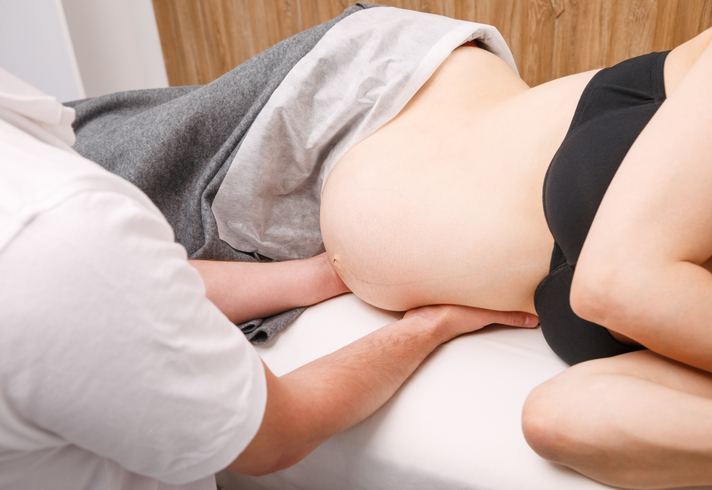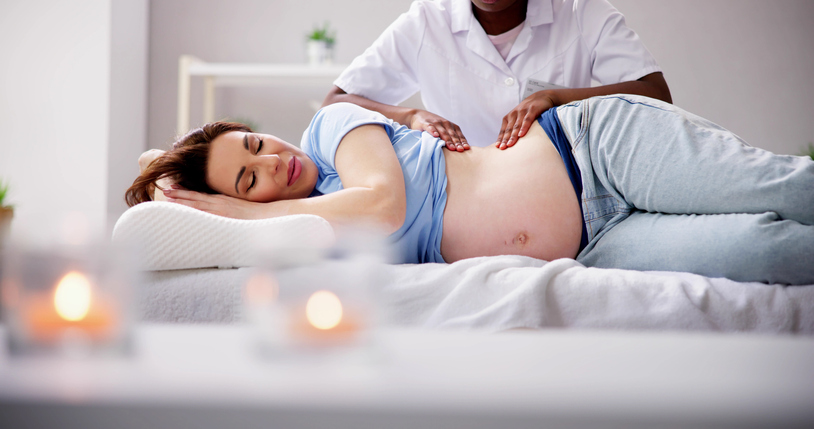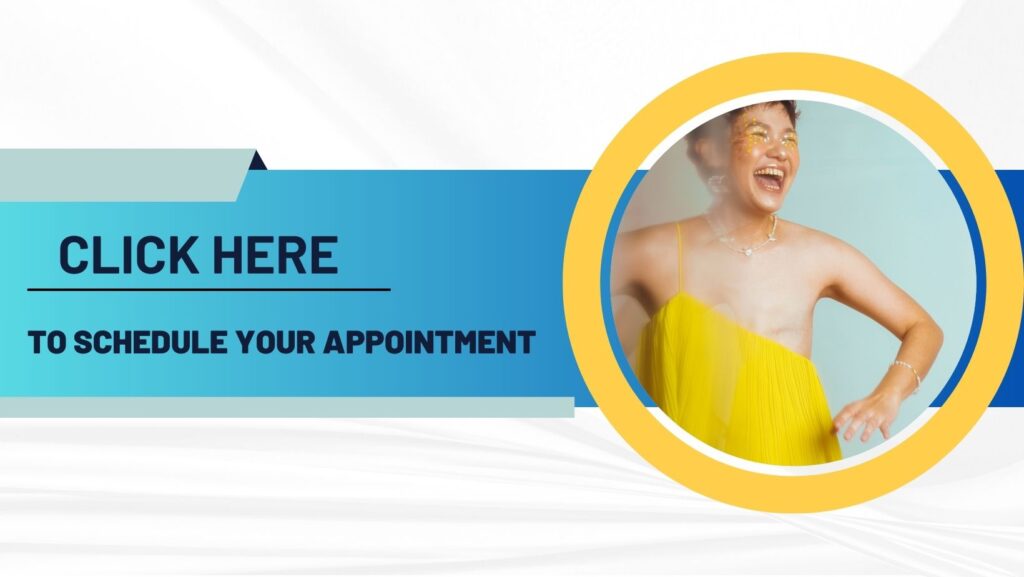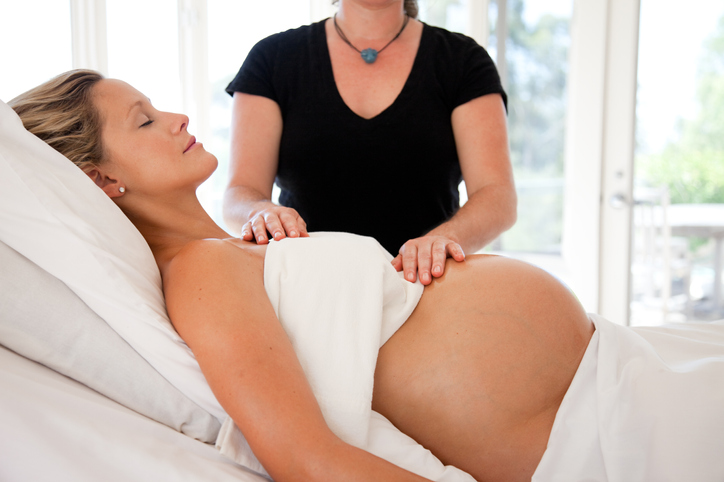Pregnancy Massage

Pregnancy massage is specifically tailored for the expectant mother’s special health and emotional needs. It can be performed during pregnancy, labor, and postpartum. Pregnancy massage therapy addresses many common discomforts associated with the skeletal and circulatory changes caused by hormone shifts during pregnancy.
Benefits of Pregnancy Massage:
Studies conducted by the American Pregnancy Organization show that pregnancy massage can:
- Reduce anxiety
- Decrease symptoms of depression
- Relieve muscle aches and joint pains
- Improve labor outcomes and the general health of the baby.
- Stress hormones norepinephrine and cortisol are reduced while of dopamine and serotonin (low levels of which are associated with depression) levels increased. These changes in hormone balances can lead to fewer complications during birth and better overall health for mother and child.
- Reduce swelling in feet & legs
- Soothes sciatic nerve pain: In late pregnancy, many women experience sciatic nerve pain as the uterus rests on the muscles of the pelvic floor and lower back, spreading tension to the muscles of the upper and lower leg, causing them to swell and transfer pressure to nearby nerves. Pregnancy massage therapy addresses the inflamed nerves by releasing the tension on adjacent muscles, relaxing the entire muscular system and reducing discomfort throughout the entire body.
- Along with the guidance and advice of a prenatal care provider, pregnancy massage therapy can be incorporated into routine prenatal care as an emotional and physical health supplement proven to improve pregnancy outcome and maternal health.
- Reduces headaches
- Relieves myofascial pain, especially in the lower back, neck, hips, and legs
- Increases blood and lymph circulation. Alleviates swelling
- Combats stretch marks
- Improves oxygenation of soft tissue and muscles
- Improves sleep
Is Massage During Pregnancy safe?
Women can receive massage therapy throughout their pregnancy. It is safe during the first, second, and third trimester
Massage Support During Labor
The massage therapist can be present during labor to help alleviate the pain in your low back, neck, and shoulders. The emotional support continues to have an emotional and physiological effect on your labor process regardless of medication. Immediately following an epidural is a great time to receive upper body massage to ease the muscular strain of earlier contractions. Unfortunately, epidurals may only affect one side of the body; massage support during labor can increase circulation to distribute the medication evenly throughout both sides your body.
Benefits of Prenatal Massage for labor:
- Reduces length of labor
- Improves outcome of labor and eases pain
- Reduces use of synthetic oxytocin (Pitocin)
- Reduces use of narcotics
- Mitigates use of forceps
- Reduces use of epidurals

Post-partum Massage
Postpartum massage is designed to restore the body to its pre-pregnant condition. Abdominal massage helps shrink the uterus and relieve subcutaneous scar tissue as well as facilitating breast feeding.
- Reduces musculoskeletal tension and pain
- Increases time spent with baby
- Decreases postpartum depression
- Promotes recovery from cesarean birth, including healing of the incision
- Contributes to rehabilitation of abdominal skin, muscles, and organs.
- Facilitates postpartum emotional, physiological, and familial adjustments
- Promotes structural realignment of the spine and pelvis; aids and accelerates the reorganization of movement
- Provides support for physical and emotional strains of new motherhood
- Decreases pain due to carrying and breastfeeding the new baby
When to Speak with Your Healthcare Provider
Pregnancy massage therapists are trained to avoid very specific types of contact and intentional pressure on acupressure points on the ankles and wrists that stimulate pelvic muscle. If you have experienced preterm contractions or consistent Braxton-Hicks contractions, please alert the therapist so that pressure points can be avoided completely.
Pregnancy massage is safe and beneficial for most pregnant women. However, as a precaution, you should tell your doctor about your intention to get a massage if you have one of the following conditions:
- High risk pregnancy
- Blood clots
- Pregnancy induced hypertension
- Preeclampsia
- Gestational diabetes
- Previous preterm labor
- History of miscarriage
- Severe swelling, high blood pressure, or sudden severs headaches
- Recently gave birth
- Preterm contractions or consistent Braxton-Hicks contractions
These conditions don’t automatically exclude you from being able to benefit from pregnancy massage but if you have any high risk conditions, it’s important that your physician be aware of any complimentary health treatments you’re receiving.
What Can You Expect In Your Pregnancy Massage?
On your first visit, you’ll complete a questionnaire and talk with the therapist about your pregnancy and your specific needs.
The body positioning during massage is critical to the safety and well-being of both you and your baby. The best position for a pregnant woman during massage is lying on her side as this provides the greatest stability for the baby and is most comfortable for the mom. Your therapist is skilled at adapting their strokes to accommodate this position.
As with any type of massage, you will be covered with a sheet and blanket for your modesty. Pregnancy massage can be performed wearing as much or as little clothing on as you are comfortable with. The therapist will adapt their technique to accommodate your needs.
What other treatments would I benefit from during pregnancy and after?
To decrease swelling in the legs and feet we recommend you incorporate Manual Lymphatic Drainage into your self-care routine.
We look forward to being part of your Wellness Team! Schedule your Pregnancy & Post-Partum Massage in Seattle HERE


